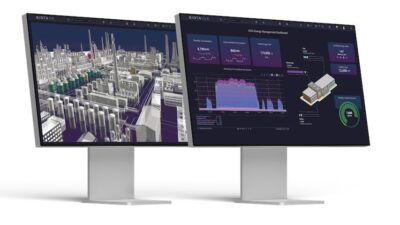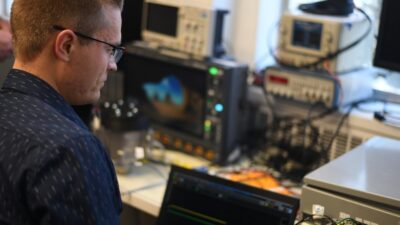Metropolitan Utilities District (MUD, Omaha, Neb.) can't tolerate a failure in its supervisory control and data acquisition (SCADA) system because it provides water and natural gas throughout Omaha. Not only could a failure threaten the water supply of more than 400,000 residents, it might cost the district hundreds of thousands of dollars in natural gas pipeline penalties.
Metropolitan Utilities District (MUD, Omaha, Neb.) can’t tolerate a failure in its supervisory control and data acquisition (SCADA) system because it provides water and natural gas throughout Omaha. Not only could a failure threaten the water supply of more than 400,000 residents, it might cost the district hundreds of thousands of dollars in natural gas pipeline penalties.
To prevent potential problems, MUD recently installed a failsafe SCADA system from Ci Technologies Inc. (Charlotte, N.C.) that uses built-in redundancy to protect data and ensure continued monitoring in case of hardware downtime.
MUD provides 30 billion gallons of drinking water per year to 164,000 customer-owners and distributes 30 billion ft3of natural gas per year to 172,500 customers.
In 1997, engineers projected they would need to upgrade MUD’s monitoring and control system to improve operating efficiencies, contain maintenance costs, and forestall any Y2K-related interruptions. Previous controls consisted of a Unix-based system that wasn’t Y2K compliant; had increasing support costs because only five were ever installed; allowed only manual switching in case of failure; and had workstations with CPUs running at 95% of capacity due to saturated data flows.
Standardizing aids efficiency
MUD chose Ci Technologies’ Citect SCADA because it had already successfully installed the system in its liquefied natural gas (LNG) operation, which balances gas loads during the winter. “We decided to standardize on a common software package throughout the entire operation,” says James Knight, MUD’s energy acquisitions manager. “Citect was in place at the LNG operation, so we knew it would work reliably and our engineers and operators were already familiar with it.”
MUD’s SCADA system communicates with 28 Fisher ROC remote terminal units in the field via 19 leased lines. Leased-line modems are connected via RS-232 to rack-mounted fallback switches connected to RS-232 ports on both I/O servers.
An Ethernet hub for the SCADA system links both I/O servers; display clients for operators; a development-file server node; and the MUD local area network (LAN) router. The I/O servers handle all I/O communications, alarms, trends, and reports. One unit serves as the primary node, and is backed up by a secondary prepared to take over seamlessly if the primary fails.
A “supergenie” pop-up screen was created for MUD’s analog I/O points. When an operator clicks on any analog I/O point on any screen, this pop-up screen appears. It displays details, such as range of the selected point. Properties of the point can be viewed, modified, disabled, or equipped with setpoints or customized alarming.
Craig Malesker, project manager for Huffman Engineering (Lincoln, Neb.), MUD’s upgrade contractor, says a large amount of custom Ci Technologies’ Cicode was written for the project, which aids complex calculations, especially on the gas side. “For instance, projection factor data are retrieved from a table each hour, and used in a calculation. This table contains a value for every hour and day,” says Mr. Malesker.
MUD’s management says installing the new SCADA system accomplished all original objectives. For example, manager nodes and floating licenses allow department heads to check operational status from their desks. This allows natural gas to be purchased or made from LNG as required without interrupting operator activities. In addition, computer downtime was all but eliminated; testing shows that switching between the primary and secondary I/O server is seamless; most paper records and logs have been eliminated; and no existing control hardware had to be replaced or modified.
For more information, visit www.citect.com or www.controleng.com/freeinfo
Author Information
Gary A. Mintchell, senior editor, [email protected]


